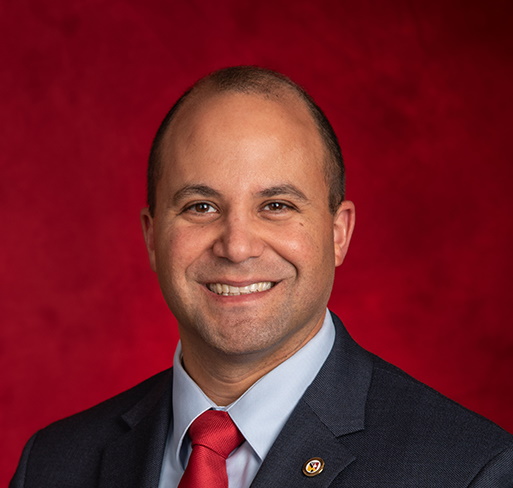The Family Office: where cash is king
by charles | Comments are closed07/18/2022
All I ask is the chance to prove that money can’t make me happy.
— Spike Milligan
Something caught our eye last week as we leafed through a recent Harvard Business School case study, “Modern Endowment Management: Paula Volent and the Bowdoin Endowment.”
The investment team has kept almost no cash or fixed income on hand for over fourteen years. Three-quarters of the portfolio runs on private equity and hedge fund moxie, the rest in stocks.
That’s not how most ultra-high-net-worth (UHNW) family offices do it. In our experience, these offices hold substantial amounts of cash and bonds, adding stocks and real estate for the long haul. Why such a divergence?
According to the HBS study, Bowdoin’s allocation to bonds and cash shrank from 18 percent in year 2000 to essentially zero by 2008 and apparently there hasn’t been a dime added to liquidity since.
Granted, it certainly hasn’t hurt Bowdoin’s performance. Ms. Volent and her team led our ten-year performance rankings in our last endowment report.
Furthermore, the school has sizable reserves. We looked up the College’s financial statements, which listed cash and equivalents of about $80 million against operating expenses of $176 million as of June 30, 2020. So the bursar made sure there was cash in the kitty. And, for the Ivys and elites, Bowdoin included, there are hefty credit lines and wealthy donors to lean on in a pinch.
Bowdoin is not alone, of course. Many large university chief investment officers have managed their endowments for years with a cash-is-trash attitude.
And, as most CIOs have learned the hard way, it’s a brave investment manager indeed who breaks from the herd.
Marks to make-believe
As we wrote last December, endowment returns for 2021 approached the realm of fantasy. Institutional investors delivered once-in-a-lifetime performance, from about 25 percent at the most tentative public pensions to 65 percent at Washington University, St Louis.
Bowdoin, for example, posted an astonishing 57.4 percent return.
We opted not to do our usual performance study last year because we felt the private market marks were too far off the mean – and reality – to fairly assess skill. Given this year’s collapsing valuations, we think we made the right call.
However impressive those investment returns eventually turn out to be once marks convert to hard cash, we can’t help but recall what my first-year finance professor (Robert S. Hamada) at The University of Chicago emphasized in class.
He said that exceptional money managers seem to have the touch. And we can theorize, not always correctly, about how they do it. But most of them have a run bracketed by a certain period or a set of conditions, and then they are gone.
Families think differently
Family offices have been around for centuries and weathered every conceivable storm. They prefer not to fly so close to the sun.
From the major-domos in ancient Rome to Rockefeller and Microsoft heirs, cash has always been king. Liquidity meant power and the means to act in good times and bad.
Maybe it’s also because family founders are usually operators who run businesses and in business, running out of cash is original sin.
The latest UBS Global Family Office Report 2022 breaks out UHNW family asset allocations and their preference for liquidity. The bank polled two-hundred-twenty-one single family offices with total wealth of almost half a trillion dollars and average assets under management of over two billion dollars.
UBS found that large family offices hold substantial cash and fixed income, about a quarter of their wealth all told. Families seldom bet the house.
There have been a few spectacular exceptions of course, Bill Hwang’s Archegos Capital Management for one; the Hunt brothers Herbert and Nelson’s run on the world’s silver supply for another. What were they thinking?
Fortunately the youngest of the three Hunt brothers, Lamar, kept his head and his money and, among other honors, became a Culver Academies Athletic Hall of Fame Inductee in 2006. Funny thing about high school, I couldn’t wait to graduate and yet, most of my closest friends come from our Culver days.
But I digress.
Read More »How to Build a World-Class Investment Program
by charles | Comments are closed06/01/2022
Sam Gallo and Endowment of the Year winner, the University System of Maryland Foundation
Each year Institutional Investor Magazine hosts a Hedge Fund Industry Awards dinner. This year’s gala was held on April 27th and celebrated superior portfolio construction and manager selection.
Among the notables, the event featured two outstanding investment heads we just happened to have recruited in the past.
Jon Glidden, director of pensions at Delta Airlines received II’s Allocator Lifetime Achievement Award and Sam Gallo, chief investment officer at the University System of Maryland Foundation accepted II’s endowment of the year honor.
Our warmest congratulations to both winners.
We managed to catch up with Mr. Gallo during a recent conference in Charleston, SC and asked him how he built an elite, award-winning investment program, what to look for in a successful CIO candidate, and what fresh challenges lay ahead.
The Endowment Elite, A conversation with Sam Gallo
Skorina: Sam, it was almost eleven years ago that I first called you about the University System of Maryland Foundation (USMF) CIO position and look where you are now.
First, you received an endowment of the year award from Institutional Investor, then you celebrated ten years as the university’s chief investment officer. Congratulations!
You don’t have the usual up-through-the-nonprofit-ranks background of a typical endowment CIO, would you take a moment to give us your highlights.
[Note: The USMF consists of twenty-plus schools with combined total assets of about $2.2bn.]
Gallo: Thank you for the kind words, Charles. Briefly. I began my career as a valuation modeler, pivoted to trader and portfolio manager, then moved to several investment and operational consulting roles, and finally on to my current position as an endowment CIO.
The last, of course, is thanks to your call so long ago.
Skorina: Your mission when you joined USMF in 2012 was to invest smartly for the future, build a team and investment strategy, and develop a commercially oriented white-glove client service model. Ten years later you receive the Endowment of the Year award from Institutional Investor.
Let’s dive right in and ask the money question, how did you do it?
Gallo: That’s a big one Charles and complex, but here goes. The key to success for any nonprofit fund begins with the Board and Investment Committee.
Boards want and expect a “world-class investment program.” But to achieve this goal, they must be willing to provide the resources and governance structure to flourish.
What boards put into it, is what boards get out of it. It’s that simple.
Think Profit Center
Skorina: Ok. But what does that mean? If a foundation, endowment, or pension fund wants an elite program, what does it take to build one?
Gallo: Let’s start by talking about our golden rule, which is, all decisions are linked and have consequences, so think and plan ahead. Be smart, be strategic. It matters.
Boards and administrations trip up when they view their investment offices as cost-centers. We are not cost centers. We make money for our schools.
Investment offices should be viewed as what they really are, essential profit-generating business divisions of the larger institution.
These offices should be nurtured, resourced, and report directly to the CEO, just like any other critically important revenue generating division.
Six Signposts on the Road to Riches
Read More »OCIO update: new firms, more AUM
by charles | Comments are closed05/15/2022
We added HighGround Advisors, Pivotal Advisors, Principal Global Advisors, and Harpswell Capital Advisors to our OCIO Spring 2022 Directory. Outsourced AUM now totals $3.74 trillion, a new record. You will find our full report here and updated directory below.
Principal Global Advisors, a subsidiary of the Principal Financial Group, acquired the OCIO assets of Wells Fargo and some of the staff. AUM totals $29.7bn under full discretion.
HighGround Advisors, founded in 1930 to manage the Baptist Congregation pension and endowment assets, now serves over four-hundred nonprofit organizations with total AUM of $2.5bn and $1.5bn under full discretion.
Harpswell Capital Advisors founded by Jack Moore, manages $455 million in discretionary assets.
Pivotal Advisors and Ms. Tiffany McGhee, African-American founder and CIO, currently manage about $400 million with full discretion.
This now means we have two African-American owned OCIO firms in our directory of one-hundred-five outsourcing managers.
Disciplina, founded by Matthew Wright, president and CIO (former Vanderbilt CIO) is our second African-American owned OCIO firm.
That works out to less than two percent, consistent with the handful of African-American stalwarts we found in our reference database of nonprofit chief investment officers and highlighted two years ago.
AFRICAN-AMERICAN CIOs at US NONPROFITS
————————————————–
Endowments
Kim Y. Lew, CEO, Columbia University IMC
Brooke Jones, CIO, Bryn Mawr College
Charmel Maynard, CIO & Treasurer, University of Miami
Frank Bello, CIO Howard University
Robert “Danny” Flanigan Jr. (1949-2021) CIO & Treasurer, Spelman College.
————————————————–
Foundations
Joseph Boateng, CIO, Casey Family Programs
Rukaiyah Adams, CIO, Meyer Memorial Trust (depart 8/31/22)
Nickol Hackett, CIO, Joyce Foundation
Bola Olusanya, CIO, The Nature Conservancy
————————————————–
Corporate Pensions
Dekia M. Scott, CIO, Southern Company
Bryan Lewis, CIO, US Steel
————————————————–
Public Pensions
Mansco Perry III, ExecDir/CIO, Minnesota SBI (retire 10-31-22)
Angela Miller-May, CIO, Illinois Municipal Retirement Fund
Cheryl Alston, CIO, Employees Retirement Fund City of Dallas
Alex Done, CIO, Bureau of AM, NYC retirement system, (left 12-31-21)
Edward “Ted” Wright, CIO, Connecticut Retirement Plans & Trust Funds (CRPTF)
————————————————–
Source: Charles Skorina & Company
Since our report, minority progress has stalled.
Danny Flanigan joined Spelman College in Atlanta in 1970 and became CIO in 2019. He passed away on March 17, 2021.
Alex Done, CIO at the Bureau of Asset Management New York City retirement system, left BAM officially on December 31st, 2021.
Mansco Perry III, executive director and CIO at the Minnesota State Board of Investments retires on October 31th this year. All the best Mansco, we’ll miss you.
And Ms. Rukaiyah Adams the long-serving CIO at the Meyer Memorial Trust in Portland, Oregon departs on August 31st 2022.
(If there are any African-American CIO additions since this last review, please let us know who you are so we can update our next report.)
(download Company Directory as PDF)
Read More »OCIO Update Spring 2022: Last Man Standing
by charles | Comments are closed05/09/2022
Pioneers take the arrows, settlers take the land – Anonymous
Our latest Outsourced Chief Investment Officer report features a list of 107 OCIO firms, each with updated contact information and AUM numbers. It’s the most comprehensive and accurate available.
For the nine months ending December 31st, 2021, the managers on our list added $472 billion (a 14.4% gain) in AUM, totaling a record $3.74 trillion dollars in discretionary outsourced assets.
But after years of steady growth, it’s apparent there’s a shakeout underway.
As we noted in our February 2021 OCIO update, discretionary asset managers without products to sell are notoriously hard to scale. Brilliant, original strategies lose their potency when they are widely copycatted. Or, a strategy works in one season, in one kind of market, but not in another.
That’s why so many OCIOs and RIAs now have private equity partners or reside within much larger financial or consulting organizations.
As Jon Hirtle, executive chairman of OCIO provider Hirtle Callaghan, remarked to Alicia McElhaney in a recent Institutional Investor article, “In business school, they teach you there’s a group of pioneers. If it works, there’s a flurry of copycat activity. And then there’s a shakeout and a consolidation.”
From our vantagepoint, it looks like the industry is entering the consolidation phase.
Wealth management M&A activity reached an all-time high in 2021, with an announced 307 transactions according to Echelon Partners’ 2021 RIA M&A Deal Report.
Over the last sixteen months, CapTrust acquired Ellwood Associates, iM Global Partners bought Litman Gregory, New Providence joined The Colony Group, Focus Financial bought CornerStone, and US Bank swallowed PFM – five firms on our last OCIO list.
And from what we hear there is plenty of dry powder and amenable prospects waiting in the wings.
Barron’s reported last November that “KKR is taking a stake in Beacon Pointe Advisors, the largest female-led RIA, in a deal that values the acquisitive firm at over $1 billion.” This after KKR invested in and then exited from Focus Financial, another RIA and OCIO aggregator.
Given this merger merry-go-round, we took our cue from Institutional Investor and spoke with Mr. Hirtle, “a pioneer in the outsourced chief investment officer business,” as Ms. McElhaney put it.
What did he think about the buy-out mania? Is the independent OCIO model still viable? And if so, how does one keep the “barbarians” at bay?
We include our conversation with Mr. Hirtle below.
What about the elephant?
Our data suggests that demand for outsourced investment services will continue to grow at a healthy rate, but that new entrants face formidable odds.
Why? Because there’s an elephant in the room. Concentration. A handful of managers control the bulk of the money.
Just eight providers – Aon, Blackrock, Goldman Sachs, Mercer, Russell, SEI, State Street, and Willis Towers Watson – manage well over half the OCIO assets, $2.073 trillion of the $3.74 trillion AUM.
That’s fifty-five percent of the outsourced pie. And they kept a tight hold on their market share in our latest reporting period, securing forty-five percent or $211 billion of the $472 billion gain.
Big Eight ranked by AUM
Read More »A Family Office Home Companion
by charles | Comments are closed03/10/2022
Honey, We’re Rich!
Say what, dear reader? You have just been blessed with a humongous liquidity event?
After decades of work and a bit of luck you “suddenly” have millions, perhaps even tens or hundreds of millions of dollars in investible wealth after selling your business or going public.
You are now officially rich, and it feels great.
But wait. What’s that? Obscure family members you never knew existed are beseeching you for “loans”; allegedly good causes from Missoula to Mozambique are demanding donations; sketchy financial “advisors” are bombing your email and phones with “once-in-a-lifetime opportunities.”
First Things First
We’ve recruited family office investment heads and advised on selecting wealth-management firms. But it works both ways. We listen very carefully to our clients and learn a lot from them.
Here is some advice from clients who have been through it.
- The very first thing. Hire a tough, experienced lawyer who is used to dealing with wealth managers, brokers, and solicitors. (Not just the firm who helped you with routine legal chores on the way up.) It will be money well spent and you won’t regret it. You will need a real pro to run interference for you against the sharks.
- The very next thing. Hire a reliable and reputable accountant who understands the complexities of wealth-management. You will need financial controls and a voice of caution. Dollars can slip away fast without an experienced check on your newly-rich exuberance.
- Take your time. No sudden moves. Think about how to organize your affairs, your objectives, impact on family-members and upcoming generations.
- Establish a realistic spending rate. And stick to it. One rashly-purchased yacht, jet, or hobby-ranch can punch a surprisingly big hole in your seemingly-unsinkable new fortune.
Fortune and Fate
Read More »




